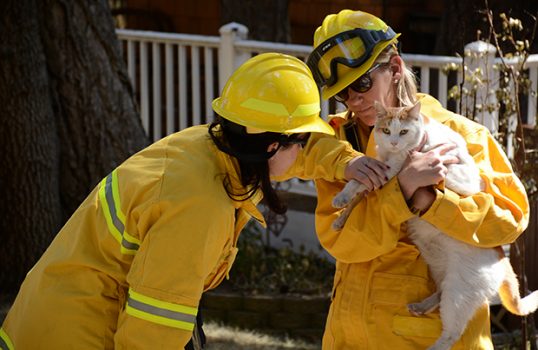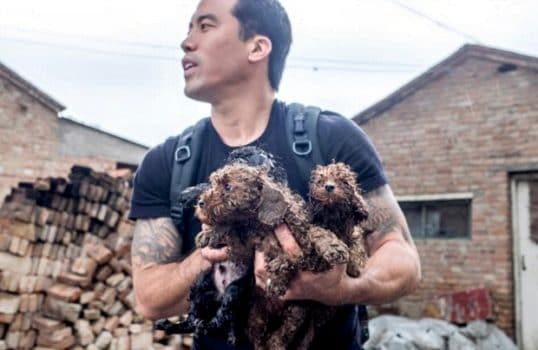In the aftermath of Orlando’s horrific Pulse nightclub massacre on June 12, 2016—which claimed the lives of 49 innocent victims and injured dozens more—an ancillary challenge soon emerged: what would happen to the pets of the victims? With their owners deceased or recovering in the hospital, what will become of four-legged family members back home?
By June 13, the Pet Alliance of Greater Orlando already stepped up as part of the solution, providing short-term care for victims’ pets. At a temporary community resource center set up following the Pulse tragedy, the Pet Alliance served as a one-stop shop for families and partners of the victims. The nonprofit provided pets with food, medical and wellness checkups, exams, dental care, vaccines, grooming, and even assistance with boarding for a handful who needed it.
“We served 21 unique families and 30 pets between June and early September,” says Steve Bardy, the executive director of the Pet Alliance. “We worked with family members to ensure pets had a home.”

Because it was such a delicate and emotional situation for the families, volunteers and staff, the Pet Alliance wanted to make the process as seamless as possible. “Our goal was to get the pets in, get them treated, and get them out, all while being very sensitive and respectful of the families,” Bardy says.
Although the Pulse tragedy presented a unique crisis for Pet Alliance, the issue of how to help animals on the heels of a tragedy is not new. From natural disasters to traffic accidents to apartment fires, tragedies sometimes leave the victims’ pets without a family or a home.
Helping Pets When Tragedy Strikes
In the immediate aftermath of 9/11, several animal-care organizations rescued approximately 200 animals and treated another 300+ pets of victims, according to a 2001 article in the New York Post. Some animals who lost their owners found new homes, while others were surrendered to shelters.
After Hurricane Katrina struck the Gulf Coast in 2005, thousands of pets were separated from their owners, who either died, evacuated their homes, or were rescued and unable to bring their pets with them.
“Sadly, about 25 to 40 percent of pets couldn’t be reunited with their owners following Katrina,” says Dr. Dick Green, senior director of disaster response for the ASPCA.
At the time of Katrina, no federal guidelines existed for how to evacuate pets during disasters, leaving stranded pet owners with a terrifying choice: leave your pet behind and live or stay behind with your pet and risk death.
After public outcry following Katrina, lawmakers passed the Pets Evacuation and Transportation Standards Act, authorizing federal agencies to provide rescue, care, shelter and essential needs to individuals with household pets and service animals.
The dilemma of how to handle pets can be a bit complicated, Green says.

“In the U.S., our legal system has to be engaged before we can put an animal up for adoption,” explains Green. “When we’ve got the death of an owner, the legal wheels have to crank. We’ve got to make sure there’s no condition in a will stating where the animal has to go.”
In high-profile events, like California wildfires in 2016 or the June apartment fire in London, family, friends and even strangers often step up to help displaced pets after a tragedy. But many animals still end up in shelters or temporary foster care while animal welfare agencies try to reunite them with their owners or find their next-of-kin. The options for these homeless animals include adoption, temporary foster care, long-term sheltering, and sometimes, euthanasia.
“The ASPCA’s number one emphasis is to save lives and shelter, and then try to reunite,” Green says.
He says that each community sets its own protocol for rescue efforts, such as how long to shelter animals they take in. The ASPCA tries to hold rescued animals at its New York shelter for 30 days after an event, but many communities often can’t do that due to space limitations.
Then it’s just a matter of waiting for these homeless pets to be adopted. Many find new homes quickly when emotions run high following a tragedy. Other times, pets languish in shelters for weeks or months.
Take Joy, for example. The tiny, fearful kitten spent a year with at the ASPCA following the destructive path of Superstorm Sandy in 2012. Joy was one of nearly 300 animals displaced from their storm-ravaged homes and taken to the ASPCA shelter. She finally found a home with fellow storm victim Rob Curran, who lost his family’s business and home in the hurricane.

“I saw a news story about the last animal left at the ASPCA from Sandy, unclaimed, and unwanted,” Curran says. “We were recovering and I had an apartment, but she had nobody and needed a home. I took a gamble that my girlfriend (now fiancé) wouldn’t mind and I called ASPCA.”
Curran says it took a while for Joy to feel comfortable around people, but with some coaxing, they all bonded.
“She now has her own bedroom in our apartment, with her cat castle and ledge on the window,” says Curran.
In fact, Joy opened the gates for additional pet adoptions, and Curran and his fiancé Beth adopted Blossom, a Pit Bull-mix from Sean Casey Animal Rescue about six months after Joy and Amber, a Redbone Coonhound from North Shore Animal League, another six months after that. “They all get along great,” Curran says.
Disaster Preparedness Tips for Pets
To protect your own pets in case of a crisis or natural disaster, Green offers the following tips:
- Microchip your pets. It’s difficult for rescue organizations to reunite pets when they can’t identify their owners. A collar and ID tag are great, but a microchip (implanted under the animal’s skin) offers permanent identification that most animal shelters can scan to retrieve owner information. Remember to update microchip information when you move or change your phone number.
- Choose a caregiver. Just like designating a guardian for your children, arrange for a trusted relative or friend to care for your pet (either temporarily or permanently) if something were to happen to you. This takes careful thought and planning, so avoid waiting until a crisis hits to have this important discussion.
- Consider downloading the ASPCA’s mobile app. Or another app that will hold your pet’s vital records, outline what steps to take in a disaster, and tell you what to do if you get separated from your animal.
- If you must evacuate, don’t leave your pets behind. If your home isn’t safe for you, it isn’t safe for your pets. Some emergency shelters allow pets, but many don’t. If you must evacuate, find a safe place for your pets to stay, such as at a friend’s house in a nearby town unaffected by the disaster.
Images via ASPCA

Lisa Beach is a freelance journalist, content marketing specialist, and copywriter.
Share:









